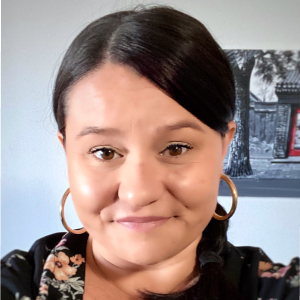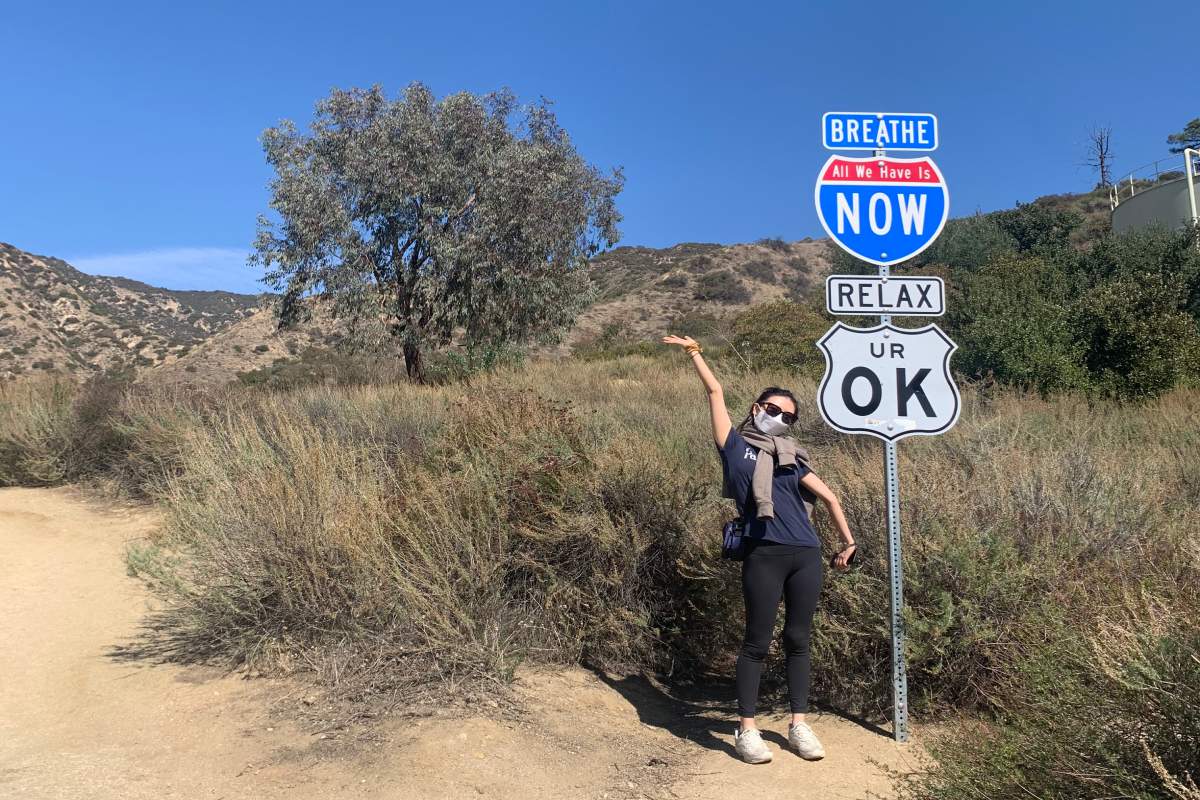One Moment at a Time: Cultivating Your Resiliency in Times of Uncertainty

The Covid-19 pandemic has now extended much longer than most of us expected. It has drastically changed the fabric of life and drowned out foresight. Our perceptions of “life as we know it” have been altered. The rhythm and certainties of our lives have been altered and it feels impossible to predict what the world will look like next month, let alone next year. At times I feel myself dividing my life into before, during, and…? It feels too soon to say after, as the pandemic continues to hit us with wave after wave and I sit here writing this with a mask across my face, as natural as the pen in my hand. Even while we may have adapted and found some routine in our new normal, our body is hardwired to respond to uncertainty by assessing threats and risks which means our nervous system is on high alert much of the time, creating a collective state of auto stress. This may have caused many of us to enter a state of overwhelm or emotional and physical exhaustion more easily, and more often, than before. On top of this we are individually and collectively dealing with tremendous loss and grief. For some those losses have been more substantial, perhaps more noticeable or measurable, yet we have all to differing degrees lost the ability to structure, manage, and manipulate our own lives. We have been forced like never before into presentism (a feeling of being stuck in the present, combined with the inability to really plan ahead). The fabric of normality has been ripped wide open. The moments where we feel like we are settling in can equally be matched by a new challenge, reminding us that things are not as they once were.
In my roles as a therapist and crisis counsellor I have had the opportunity to bear witness to the impacts these times have taken on people’s health and wellness. There have been moments professionally and personally over the last two years that I thought it would break me. It didn’t. Two months into the pandemic I bought a “gold” necklace adorned with the word resilience. The quotations around the word gold are important because it appears gold and shines in all the right places, but, if I am honest, at the price point, I think it must be gold plated silver. I think this is an interesting metaphor for the word the necklace holds. To be resilient, to possess and demonstrate resiliency, is brave and beautiful, but when we really look at what’s underneath it takes a lot of grit, pain, and experience to persevere. Sometimes, I wear the necklace as a reminder of my strength and fortitude. Like a medal or ribbon for how far I have come and how much I have endured. Other times I put it on as a reminder that I AM resilient, that as my mother says, “this too shall pass”. A tangible place to run my fingers when the overwhelm hits, a grounding in a chaotic world, an aspiration more than a fact. The multiple purposes my necklace serves are much like the many different ways our emotions fluctuate on any given day. Despite my training and lived experiences I cannot give you the recipe for a perfect combination for helping us heal and relieving stress, because there is not one.

As a society we glorify recovery and triumphs for their inspiring ending without taking the due time to process the darkness that preceded them. Beyond this, with the continual rise of the mindfulness and self-help movement, we are often made to feel that the answers to our troubles are just one step or click away. There is a constant stream of mixed messages. We are told to take care of our mental health, while also being hit with toxic positivity that can, at times, have us questioning the validity of our emotions and our capabilities to cope. Social media and the culture of “fine” can have us feeling like everyone has it together but us. And then if we do allow ourselves to feel, comparative suffering can have us discount or dismiss our stress because others have it worse.
The truth is that everyday most of us are somewhere in the middle, getting by, getting knocked down, experiencing joy, and utilizing a combination of healthy and unhealthy coping mechanisms to make it all happen. For me, maintaining the belief that everyone is trying the best they can in the current moment with the tools they have and can access has drastically increased my own resiliency and the grace I give others across different situations. It helps most on the days where I can also extend that grace to myself.
During this unusual time (or really anytime), we may feel one way at one moment and completely different in the next, or find some pieces easier on some days and harder the next. These are normal responses. Everyone copes with challenges in different ways. To build long lasting resilience I think it is most critical to get to know our habits. To recognize what strategies work for us and which are band-aid solutions. We all use escapism at times, such as avoiding, withdrawing, or numbing. This can be protective. They can help us from getting too overwhelmed, but they can also become habits and pitfalls to properly healing and living in the now. Brene Brown says “Joy collected over time fuels resilience” and I could not agree more, however for some of us we can let what used to bring us joy become an escape. When I took the time to understand the ways in which I was getting through, I saw I had patterns and habits that were no longer serving me. I realized sometimes holding on to what was, what helped us in the past can hinder us from what can be, from learning new things and growing.
One of the biggest ways to take stock of where we are and change our windows of tolerance is by being intentional. Asking yourselves before you reach for a person, activity, substance, or object: am I doing this to numb myself, to escape my reality by zoning out, or because it will provide relief, a welcome distraction and/or joy? Is it harmful or helpful? Try pausing, taking note of your feelings at that moment. You may be surprised by what you find. I know I was.
Making deliberate changes is hard. Since we often need to try many strategies before we find what works for us, self care can end up feeling like another thing we are not quite doing well. Know that there is no right or wrong combination for taking care of yourself. Finding what works for each of us is a constantly evolving journey of trial and error. Most important is to have some strategies and tools that are built into our everyday practice, and not just when we feel overwhelmed or burnt out. Below is a list of ideas and strategies that is by no means exclusive or exhaustive, but that have been found to be helpful. You may find some new tips that resonate with you, or just a reinforcement of what already does and does not work for you. Take what fits and throw out what does not!
- Naming your struggles and facing your feelings – consciously acknowledging the emotion you are having, and not what you think you should be having. Pinpointing what we are struggling with in each moment can help us to understand what tool we need to access in order to keep going
- Sometimes it’s okay to acknowledge that this situation SUCKS – let yourself feel those feelings. Set a limit for how long you “sit in the suck” if you can… then try to problem solve or activate a healthy coping mechanism.
- Acknowledge the reality – You will first acknowledge the reality of loss with your head and then over time you will come to acknowledge it with your heart.
- Do not let anyone tell you how to feel, or what you should feel.
- Express your feelings in a tangible or creative way when possible
- Practice forgiveness of yourself and others, try to believe we are all doing the best we can!
- Be mindful of the ‘little things’
- Active optimism not toxic positivity
- Recognize the difference between complaining that relieves and complaining that reinforces negative stress.
- Take a break from people who are not making you feel good during this time.
- Deal with problems in a structured way – many things feel much more overwhelming right now. It can be useful to identify which things are actually problems that need to be solved or addressed, and which are just worries that are not necessarily as big as we feel they are.
- Break things down into manageable chunks – putting goals and tasks into ‘must/should/could’ can make them feel more doable. On the days when we only get to the musts, that is okay!
- Remind yourself that you are strong and be cautious with the “What ifs” – we can sometimes overestimate how bad a situation will get while underestimating how well we are able to cope. Our stress and anxiety can cause us to focus on the negatives and trigger “What if” questions. Acknowledge them, maybe even weigh the evidence of the likelihood of worst-case scenarios but also come back to the concept that thoughts are not always facts, and our mind is a powerful storyteller! Sometimes our thoughts and/or our beliefs are so strong, or we have held them for so long, that they feel like inexplicable facts. Being mindful of challenging them is a daily practice.
- Recognize and challenge “the story you are telling yourself” in any given moment. Choose the language you use in formatting your new narrative carefully.
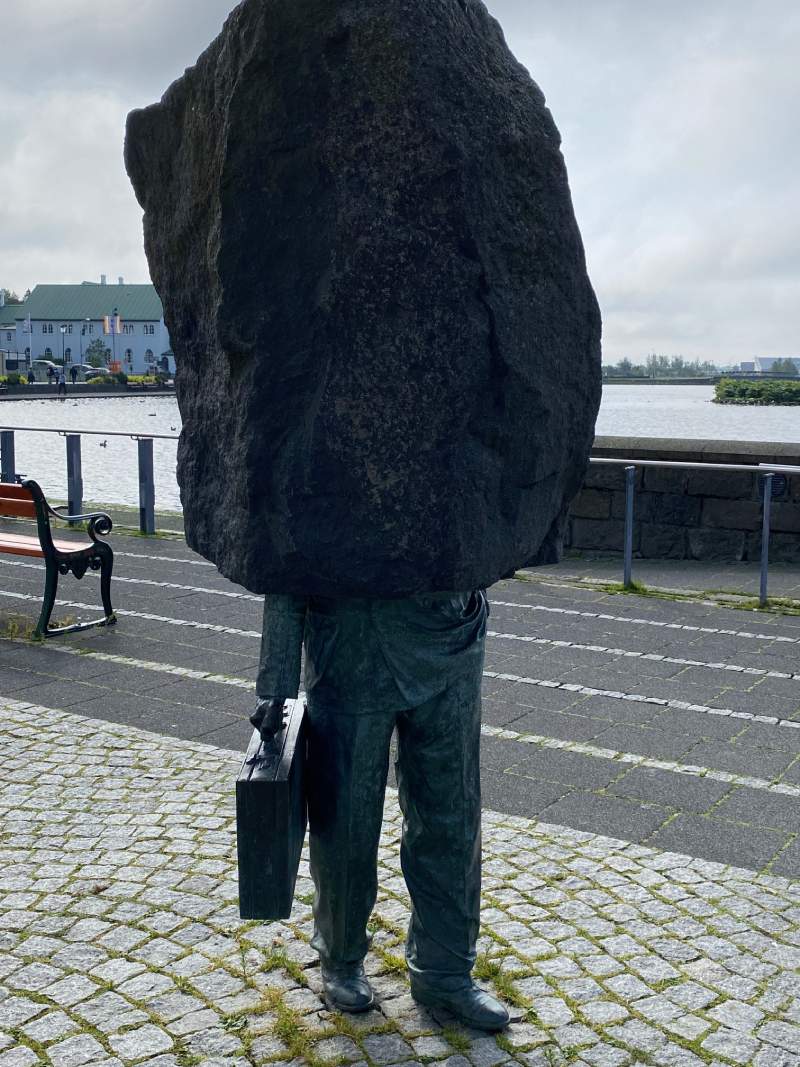
- Reframing: The essential idea behind reframing is that a person’s point-of-view depends on the frame it is viewed in. When the frame is shifted, the meaning changes and thinking and behaviour often change along with it.
- Focus on what you can control – sometimes all we can control is our own reactions. This may seem simple, but it can be a good reminder when we are stuck in a stress cycle.
- Re-animate your core values—bring to conscious awareness the values most important to you. Do at least one thing a day that aligns with your core values: something you can genuinely feel good about.
- Practice Self-Compassion – the three key elements to self-compassion are mindfulness (being aware of the way we speak to ourselves and about ourselves, honouring our emotions and experiences), self-kindness (rather than being harsh we act supportive and encouraging to ourselves), and common humanity (a recognition that we are all flawed and works in progress).
- Find New Ways to Get What We Have Lost or Are Missing – examine what is at the heart of what we are missing out on and see if it can be adapted in our current situation. For example, missing travelling. The core of this is (for me) is new experiences, so can I meet that need in my city by trying new restaurants or visiting new areas? It is not the same, but when I can break down what it is I am actually missing from what I have temporarily lost, I may find more joy/satisfaction in the new normal.
- Finding Small Ways to Be Active or to Self-Soothe – this can include cardio exercise, yoga, spending time in nature, meditation, reading, baths and so on.
- Practice kindness and compassion whenever possible – In my opinion it is almost always possible.
- Practice Savoring and Gratitude -Try to sink into a moment of joy even if it’s just for a minute! Add to it a daily gratitude practice that can be as simple as listing three things we appreciate at the start or end of our day.
- Do a high/low of the day or week with someone in your inner circle, this can allow us to be more reflective and opens up conversations.
- Limit and diversify media consumption – while it is important to be informed and feel connected, news (both official and social) can be overwhelming and hard to process. Try setting parameters on how much time you are spending consuming media. Ask yourself is it making me feel better? Am I feeling connected or is it causing me to compare myself more to others? Am I looking at sources that only confirm what I already know or believe? I use the dreaded time limit function on my smart phone and try to be mindful of doom scrolling.
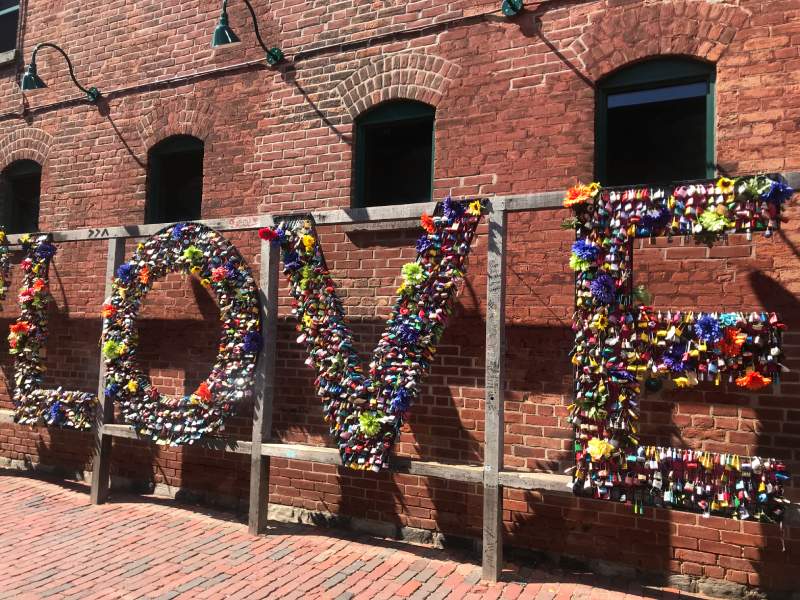
- Give support, encouragement, and praise to others – learn to accept the same
- GET SUPPORT – hold space for others but also ensure you are reaching out to someone by phone or video chat if in-person contact isn’t an option, such as a friend or family member, who will listen with presence and emotional availability. Let them know what you are experiencing and ask for what you need. If you do not feel better, reach out for professional support.
- And the best advice I ever allowed myself to follow is to forget one day at a time… just take it one moment at a time.
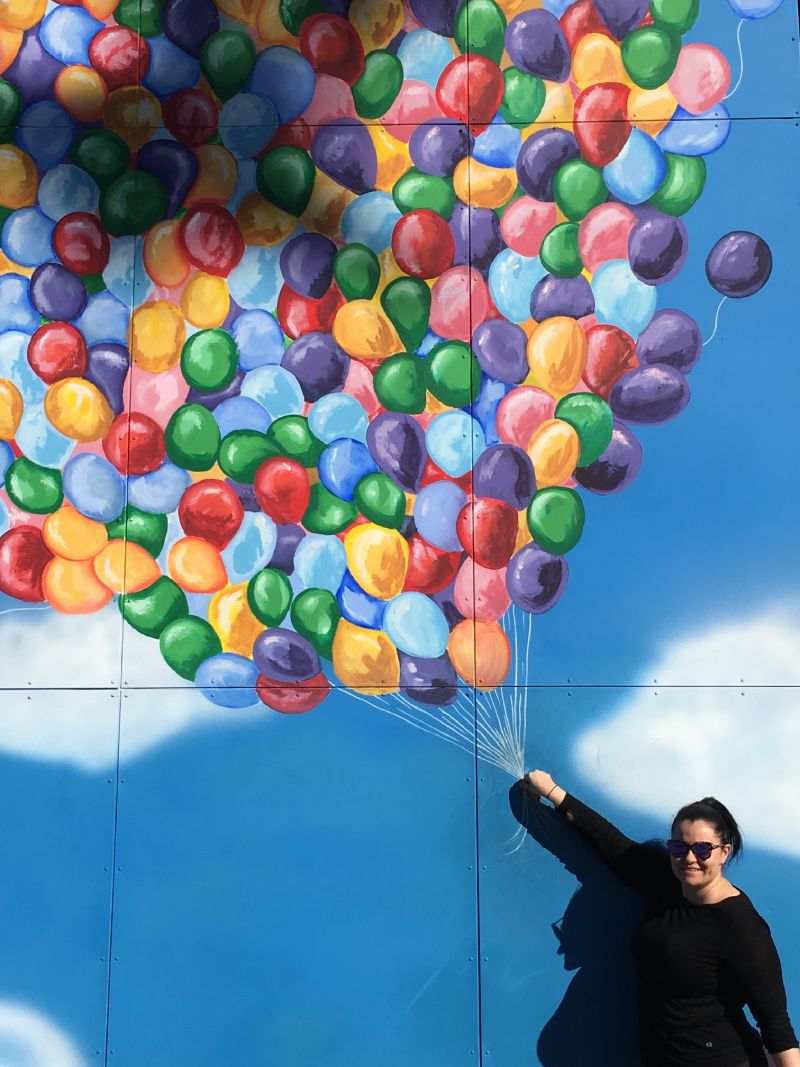
As I continue the ongoing work of helping myself and others by adding and subtracting from the above list, what I now know for sure is that I am resilient. There are moments at night where I reflect on all I have done, seen, or heard in that day and I cannot believe what I have accomplished, or all that has come my way. Yet there are still equally as many moments where I am paralyzed with fear, self doubt, and sadness. Where when I wake up and I look forward it feels impossible to complete all that is in front of me or expected of me. I now know this does not make me weak and does not speak to my resiliency. It makes me human; it is a mark of my vulnerability, my process, and my empathy. It gives me the courage to keep choosing to “get back up” and look for joy in all the little things that make up a life. It makes me stronger.
I encourage you to listen, hear, and be immersed in others’ stories. Be inspired by their joy, their triumphs, and their resiliency. Take from them what connects with you and use it to build your tools to forge your own path. But do not forget that where there is light there is darkness and that YOUR resiliency is not defined by theirs. Your resiliency will look different each day with each uncertainty, challenge, and success. It is yours to cultivate and wear, as a reminder, or badge of honour, one precious moment at a time.
Brown, B. (2017). Rising Strong. Random House USA.
Coping with stress and anxiety. (n.d.). Retrieved from https://www.camh.ca/en/health-info/mental-health-and-covid-19/coping-with-stress-and-anxiety
Lipsky, L. V. (2018). The age of overwhelm: Strategies for the long haul. Oakland, CA: Berrett-Koehler.
Nagoski, E., & Nagoski, A. (2020). Burnout: The secret to unlocking the stress cycle. New York: Ballantine Books
Neff, K. (2013). Self-compassion step by step – the proven power of being kind to yourself. Sounds True.

